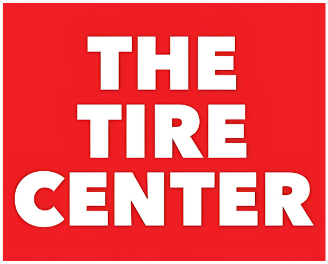Most drivers don’t pay much attention to their tires beyond the occasional glance before hitting the road. But your tires are the only part of your vehicle that makes direct contact with the pavement, and when they start wearing unevenly, it’s more than just a nuisance. Uneven tire wear can reduce traction, shorten tire life, and even compromise your safety. The good news is that spotting the signs early and taking action can save you from costly repairs down the line.
If you’ve ever noticed one part of your tire looking bald while the rest still has tread left, you’re not alone. This is one of the clearest signs of uneven tire wear. But why does it happen, and how do you fix tire wear before it becomes a major problem? Let’s break it down.
What Is Uneven Tire Wear?
Uneven tire wear occurs when one area of the tire tread wears down faster than the rest. Instead of an even, balanced pattern across the surface, you’ll see spots that are thinner, smoother, or more worn out. This issue isn’t just cosmetic—it signals that something is off with your vehicle’s suspension, alignment, tire pressure, or driving habits.
Because tires are designed to evenly distribute weight and road contact, irregular tread wear disrupts their performance. As a result, you may notice rough handling, noisy rides, or even reduced fuel efficiency. Ignoring the problem only makes it worse, sometimes leading to premature tire replacement or dangerous driving conditions.
Common Types of Uneven Tire Wear Patterns
Understanding the type of tread wear your tires are showing can help you determine what’s causing the issue. Here are some of the most common patterns:
1. Center Wear
When the tread in the middle of the tire wears faster than the edges, it usually means your tires are overinflated. Excess air pressure causes the center to bulge and make more contact with the road.
2. Edge Wear
If the outer edges of the tire are wearing down while the center looks fine, underinflation is often to blame. Tires without enough air pressure put too much weight on the edges, leading to faster wear.
3. Cupping or Scalloping
This type of wear looks like small dips or scalloped patterns across the tread. It’s typically a sign of suspension problems or unbalanced tires. Cupping can make your ride noisy and bumpy.
4. Feathering
Feathered wear occurs when one side of the tread blocks is rounded and the other is sharp. This often points to poor alignment or worn suspension components.
5. One-Sided Wear
If one side of the tire tread is significantly more worn than the other, your wheels may be out of alignment. It could also indicate a camber issue, where the wheels are tilted inward or outward.
By paying attention to these patterns, you can get a head start on identifying the underlying issue before it affects all four tires.
What Causes Uneven Tire Wear?
Several factors can cause your tires to wear unevenly. Some are as simple as forgetting routine maintenance, while others may involve deeper mechanical issues. Here are the most common culprits:
- Improper tire pressure: Both overinflation and underinflation affect how your tire makes contact with the road.
- Poor wheel alignment: Hitting potholes, curbs, or simply everyday driving can knock your wheels out of alignment, leading to uneven tread.
- Unbalanced tires: If the weight isn’t evenly distributed across your wheels, your tires may develop vibration issues and irregular wear.
- Worn suspension parts: Components like shocks, struts, and ball joints help absorb road impact. When they wear out, your tires suffer the consequences.
- Driving habits: Aggressive braking, speeding over bumps, or cornering too sharply all put extra strain on your tires.
- Neglecting tire rotations: Failing to rotate your tires regularly allows some to wear faster than others, especially on front-wheel-drive vehicles where the front tires handle most of the work.
How to Spot Uneven Tire Wear Early
Catching uneven wear before it progresses is key to saving your tires. Here’s what you can do to stay on top of it:
- Perform regular visual checks: Take a few minutes each month to inspect your tires for bald spots, smooth patches, or worn edges.
- Use the penny test: Place a penny with Lincoln’s head facing down into the tread. If you can see the top of his head, your tread depth is too low.
- Check for vibrations while driving: If you feel your steering wheel shake at certain speeds, your tires may be unbalanced or wearing unevenly.
- Monitor your tire pressure: Keeping tires inflated to manufacturer recommendations helps avoid over- or underinflation issues.
- Listen for unusual noises: Whining, humming, or rumbling sounds could be signs of cupping or feathering on the tires.
How to Fix Tire Wear Before It’s Too Late
Once you’ve spotted uneven wear, the next step is addressing the root cause. Depending on the type of wear, solutions can range from quick fixes to more involved services:
- Adjust tire pressure: If uneven wear is due to over- or underinflation, correcting tire pressure can slow down further damage.
- Get a tire rotation: Rotating your tires every 5,000 to 7,000 miles ensures they wear more evenly across all four corners of your vehicle.
- Schedule a wheel alignment: Realigning your wheels to factory specifications corrects pulling, uneven wear, and handling issues.
- Balance your tires: Professional tire balancing redistributes weight across the wheels, preventing vibrations and scalloped tread patterns.
- Inspect suspension parts: Worn shocks, struts, or ball joints should be replaced to prevent further uneven wear.
- Replace severely worn tires: If the tread is already dangerously thin or compromised, replacing the tires may be the safest choice.
The most effective way to fix tire wear is to combine proper maintenance with expert care. A professional tire shop can diagnose the exact cause and perform the right services to restore your tires and prevent premature replacement.
How to Prevent Uneven Tire Wear in the Future
The best cure is prevention. Here are some habits and services that help extend tire life and keep your vehicle safe:
- Stick to routine tire rotations as recommended in your owner’s manual.
- Schedule regular wheel alignments, especially after hitting potholes or curbs.
- Keep a tire pressure gauge handy and check inflation monthly.
- Drive smoothly, avoiding sudden stops and aggressive cornering.
- Get your suspension inspected during routine service visits.
By being proactive, you not only avoid the hassle of unexpected tire replacement but also improve your vehicle’s fuel economy and handling.
Why Professional Tire Service Matters
DIY checks can help you spot the warning signs, but fixing uneven tire wear often requires professional tools and expertise. At The Tire Center in Santa Ana, CA, we specialize in keeping your tires in top shape with services like alignments, rotations, balancing, tire replacements, and rim repairs. Our team can quickly identify the cause of irregular wear and recommend the right solution, ensuring you get the most out of your investment in quality tires.
Tires aren’t something to take for granted. By recognizing the early signs of uneven tire wear and taking action, you can protect your safety, save money, and extend the life of your tires. If you’ve noticed unusual tread patterns, vibrations, or handling issues, now is the time to act.
Schedule an appointment with The Tire Center in Santa Ana today and let our experts fix tire wear problems before they compromise your drive. Call us now or book online to get your tires inspected and serviced by professionals who care about your safety and your vehicle’s performance.


